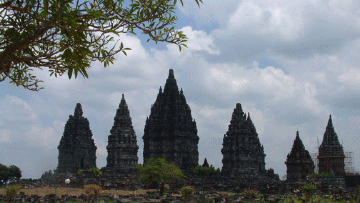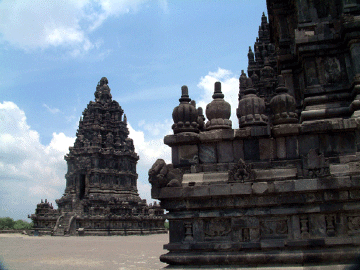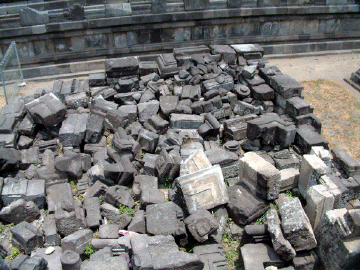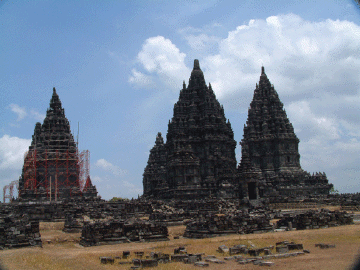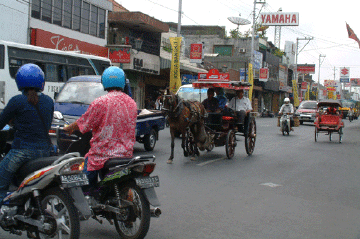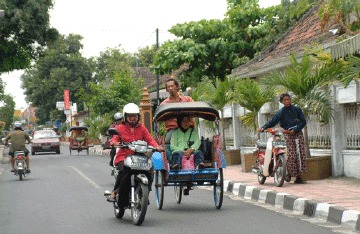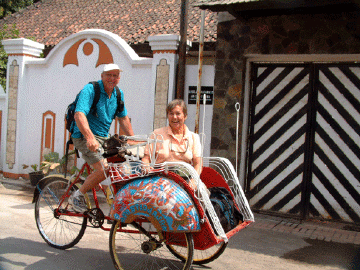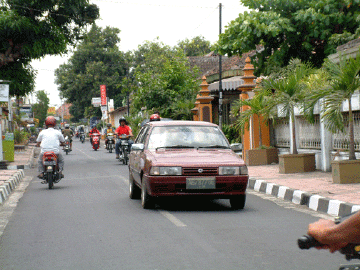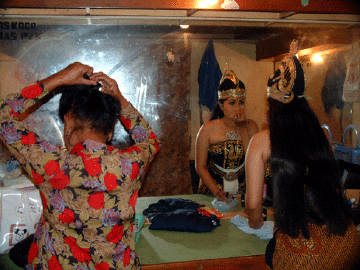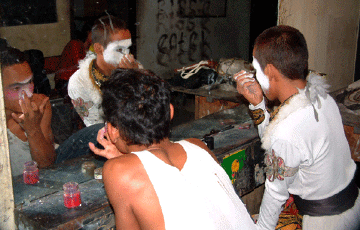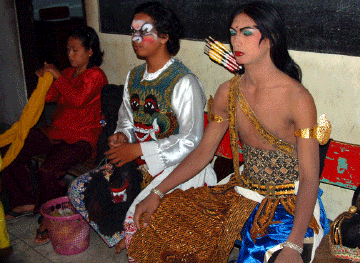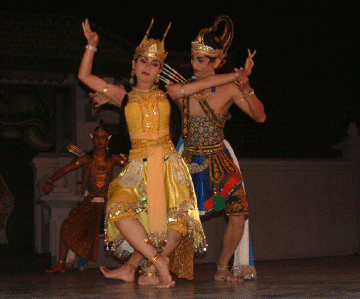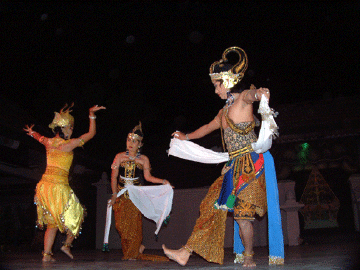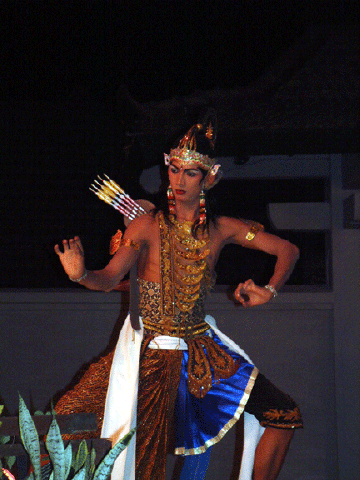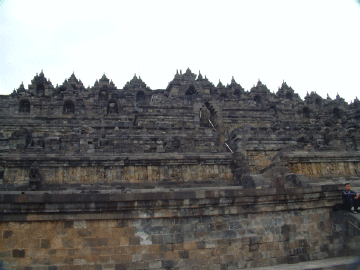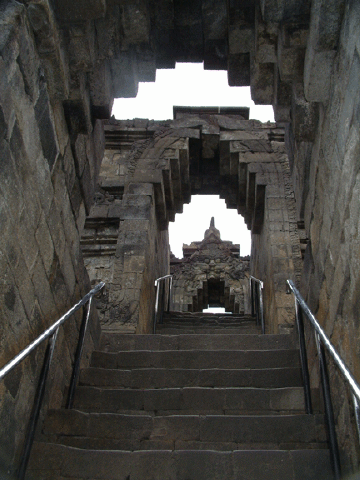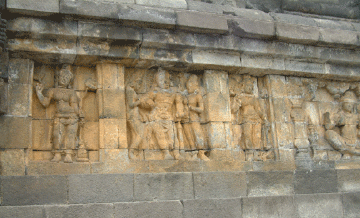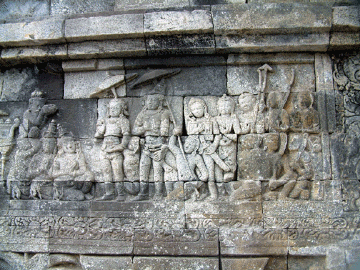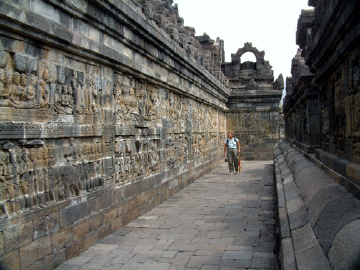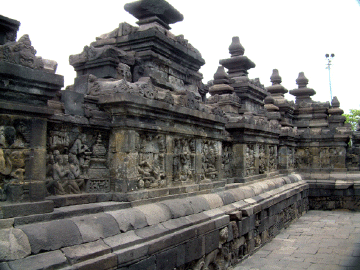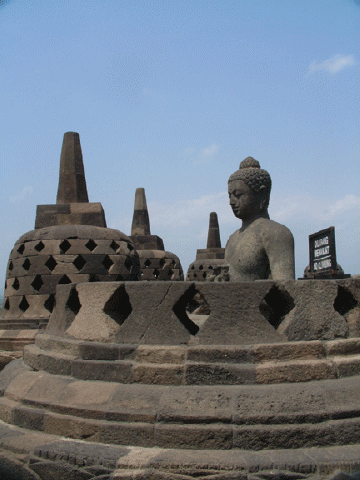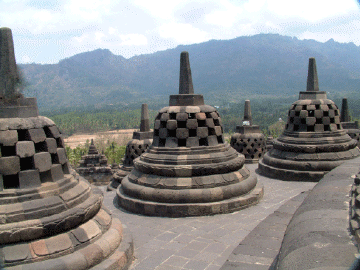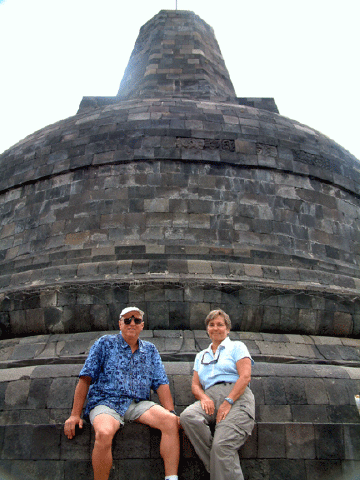Indonesia
Scholarship Program Indonesian Life Komodo
Sumbawa
Lombok
Growing Rice Bali
Royal Funeral Java
Borneo

Java is the most populous island in Indonesia and 70 % of Indonesia's 220 million people live here. It is the center of Indonesia's politics and business as well as home to many of the archipelago's historic sites. Our reason for visiting was to see the famous temples near Yogyakarta, so we left Ventana in the Bali marina and flew directly to there. The two temples, one Hindu and one Buddhist, were both built in the 9th century within a period of 50 years and are near each other. We are not sure if it was religious one- ups-manship or what but both are big and impressive.
The Hindu temple complex of Prambanan was first on our itinerary and as we neared it we could see several of the 50 temple sites including the central temple of Shiva towering 15 stories in the air. Unfortunately only a few months before our arrival the area had suffered a massive earthquake and emergency restorations were underway. When the archeologists had first uncovered the temples many had fallen down and the blocks were piled in row after row where each could be seen including the carvings on the face of the stones and they attempted to figure out the world's largest three dimensional jigsaw puzzle. That they figured out where any of the stones went is miraculous but still many piles remain yet to be reassembled.
Today Java is entirely Moslem, there are very few Hindus left so even the temple guides were Moslems. When Dee and I toured Aztec or Mayan or Inca ruins in the Americas it seemed normal to have a guide of another religion as there are no Aztecs or Mayans or Incas left, but touring a site of what today is still a major world religion with a guide of a different faith gave the entire experience a sort of unreal quality.
Placing your cursor over the photos will give you a caption and clicking on any photo will give you an enlargement of that photo. After enlarging you can hit the back button on your browser to return you here.
The city of Yogajakarta is one Java's metropolises and the variety of transport needs to be seen to be believed. We mostly walked or traveled by bicycle rickshaw called bechaks and we shared the road with horse carts, cars and thousands and thousands of motorcycles. Most Indonesians are too poor to own any transport at all but those that can afford something buy a motorcycle. Motorcycles must outnumber cars on the road 20 to 1 and you often see a family of 4 going somewhere on their 90cc Honda motorbike, or see an entire store of sorts on the back of a motorbike with a rack that extends 4 feet either side of the bike. The lines dividing the center of the road are universally ignored and it is normal to see a line of motorcycles on the wrong side of the street cruising against the traffic between the traffic lanes and the parked cars. Rob tried driving the becak for awhile on a quiet side street and gained a new level of appreciation for these hard working people.
The major cultural attraction on both Java and Bali seemed to be performances of the classic Hindu tale of Ramayana. We saw this performed three times, once as a shadow puppet show, a second time as a classic ballet and the third time by Balinese kechak dancers. In Java we were able to go backstage and see the dancers in their dressing rooms, watching the main characters Rama, Sita and Hanuman the white monkey god prepare for their roles.
The Buddhist temple of Borobodur is a large monolith of carved stone going up nine levels signifying the steps Buddhists must travel through to reach Nirvana. The six lower levels are square and have nearly 1500 narrative panels illustrating Buddhist teachings and tales. One scene even showed a large ship which we found fascinating. The three upper levels are circular with no decoration, meerly latticed stupas which each contain a statute of Buddha. As one walks around and up, you progress from the busyness of everyday life to more serenity and finally the top stupa which is empty and nirvana.
To view the next page click here

















